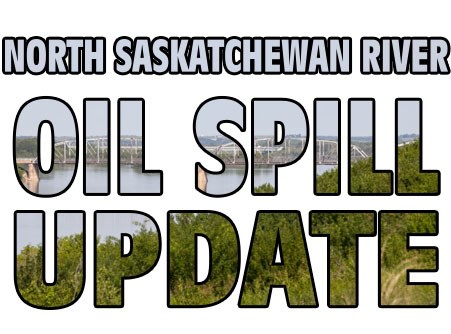The City of North Battleford and the Town of Battleford are in discussion on an agreement for the City to buy treated water from the Town and have it piped across the river.
During the provincial government's daily teleconference media update Thursday, Sam Ferris, executive director of Environmental and Municipal Management Services with the Water Security Agency, said he expects a pipe to be connected within the next few days to bolster the City's supply of treated water.
Mayor Derek Mahon said Thursday it should not result in Battleford residents having to conserve beyond the normal summer lawn watering schedule.
"I believe there will be no water restrictions in Battleford after the proposed connection is made," he said.
Thursday afternoon, Mayor Ian Hamilton of North Battleford said the agreement would probably be completed that same day.
During the 11 a.m. conference, Ferris said three WSA staff are working closely with the City of North Battleford and its consulting engineers, looking at a variety of options for alternative sources of raw and treated water.
In addition to buying water from the Town, the City is looking at adding a well to supplement its groundwater source.
The City has two treatment plants, the F.E. Holliday Water Treatment Plant, which is currently shut down as its water supply comes from an intake on the surface of the North Saskatchewan River, and Water Treatment Plant No. 1, which treats groundwater from the City's well field.
Ferris says the groundwater treatment plant has more capacity than is being used right now, but it is limited by the amount of well water available.
A pipe from Battleford would supply water that is already treated and would be "pushed" through the F.E. Holliday plant, said Ferris.
He said the treated water levels in North Battleford's reservoirs were "generally good" as of Thursday morning, but water conservation remains essential.
Ferris said the City is also looking at a technology based system to treat raw river water before it enters the F.E. Holliday plant which might prove useful as conditions, in terms of quality, improve on the river.
Wes Kotyk, executive director of the Ministry of Environment's Environmental Protection Branch, said his department is continuing to focus on shoreline cleanup and assessment. They are in the preliminary phase of recovery along shorelines from the location of the spill to the Highway 21 bridge, 20 kilometres downstream.
Currently he said there about 62 boats in use, 22 are being used for sampling, four are doing shoreline assessment and 19 are focused on cleanup and containment. There are another 17 prepared to deploy shortly.
Ten booms are in place to mitigate any oil and material that may be dislodged during remediation, Kotyk added.
The worst impact is at the beginning of the release, and the further down the river they go the impacts are less and less.
"We have to clean up at the start before we can address the following areas," he said.
The spill sheen is believed to have passed Highway 6, about 500 kilometres downstream Tuesday. It's difficult to identify exactly where it is because, given the nature of the river, observations can be complicated.
As of Thursday, the updated number of wildlife mortality is 19, made up of 11 birds, three mammals and five fish. There are eight animals in recovery, said Kotyk.
As to the cause of the spill, Laurie Pushor, deputy minister of Economy, said Husky has submitted an amended incident report and there would be a complete, comprehensive and thorough review of the incident and Husky's activities in the area. He would not speculate on the cause, nor comment on the differences between Husky's first and amended incident reports.
He said the province's online system receives daily information on every facility in the province.
"It would be very speculative of me to say how often reports are corrected."




